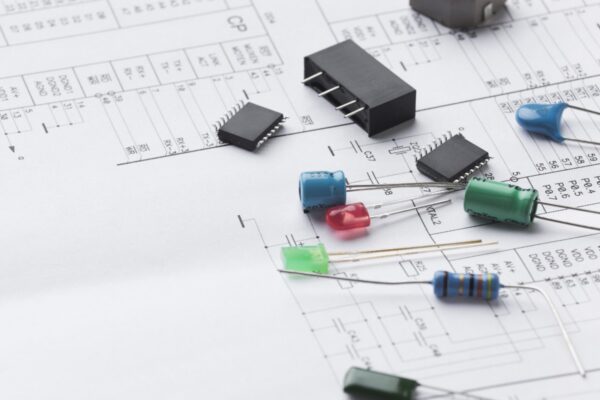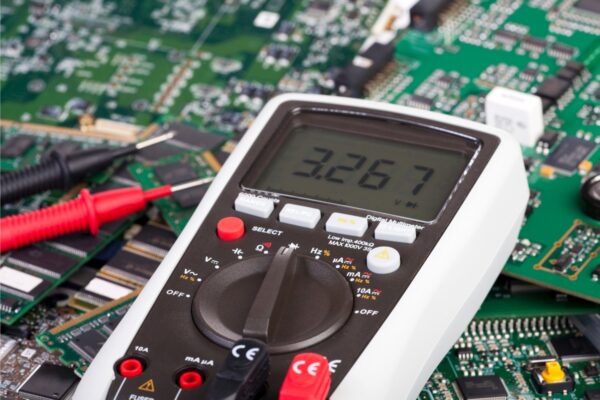What is Capacitive Coupling
Capacitive coupling, also known as electrostatic coupling, is a phenomenon where electric energy is transferred between two conductive elements that are separated by insulators. It occurs when these elements are in close proximity to each other, allowing energy to be exchanged.
In capacitive coupling, the transfer of energy is facilitated by the presence of capacitors. Capacitors consist of two conductive terminals separated by an insulator. When one terminal is at a higher voltage potential than the other, electric charges accumulate between the terminals. When the voltage is removed, the capacitor releases the stored charges in the form of a current.
In the context of PCBs, capacitive coupling can occur between various elements that act as virtual capacitors. For example, when two copper traces are placed close to each other on a PCB, the capacitance between them allows energy to be transferred from one trace to the other.
Capacitive coupling is more significant in AC circuits compared to DC circuits. This is because capacitors provide a low impedance path for AC, enabling energy transfer between the conductive elements. However, capacitors tend to block DC, making it less effective for energy transfer in this case.
The implications of capacitive coupling can be both positive and negative in PCB designs. On the positive side, intentional capacitive coupling can be utilized to transfer energy between different parts of the circuit, enabling functions such as signal transmission or power distribution. On the negative side, unintended capacitive coupling can lead to unwanted crosstalk or interference between adjacent conductive elements, impacting the overall performance of the PCB.
Frequently Asked Questions
Why Is It Called Coupling Capacitor
A coupling capacitor is a component that facilitates the transmission of an alternating current signal from one node to another. Its purpose is to maintain the integrity of voltage, current, and resistance within each stage. By allowing AC variations to be coupled from an input source while blocking any DC coupling, the coupling capacitor ensures efficient signal transfer.
Do Coupling Capacitors Have Polarity
No, coupling capacitors do not have polarity. Similarly, the output coupling capacitor is also not an electrolytic capacitor.
Why Is Lower Capacitance Better
Lower cable capacitance enables a greater transmission of the instrument’s natural “brightness,” “presence,” or “bite” to the amplifier. Consequently, this allows for lower settings on the treble controls, resulting in reduced hiss and other undesirable noise.
What Causes High Capacitance
Capacitance is influenced by the proximity of the conductors and the insulation surrounding them. When the conductors are brought closer together or have a larger surface area (such as longer wires or shields), the capacitance will be heightened.
Why Do We Use Capacitive Coupling
The coupling capacitance between the two circuits serves the purpose of transmitting the useful AC signals to the input terminals of the back-end circuit. This allows for convenient circuit design and maintenance, as Direct Current (DC) cannot be added to the back-end circuit, as shown in Figure 1.
What Is the Difference Between Capacitive Coupling and Direct Coupling
Capacitive-coupled amplifiers have limited response to DC input signals. On the other hand, direct coupling using a series resistor instead of a series capacitor eliminates the issue of frequency-dependent gain. However, it comes with the drawback of reducing the amplifier gain for all signal frequencies by attenuating the input signal.
What Is the Difference Between Capacitive Coupling and Inductive Coupling
The inductive coupling mechanism involves the transfer of power from the excitation coil to the plasma. On the other hand, the parasitic capacitive coupling mechanism leads to the generation of rf plasma potential and DC self bias on the dielectric window. This, in turn, results in undesired sputtering of the dielectric window.
What Are the Disadvantages of Capacitive Coupling
Capacitive coupling method has both advantages and disadvantages. However, it is important to note that there are certain drawbacks associated with this method. These include issues such as size, complexity, poor pattern, and high sensitivity. On the other hand, one benefit of capacitive coupling is its ability to provide good shielding for RF signals.





